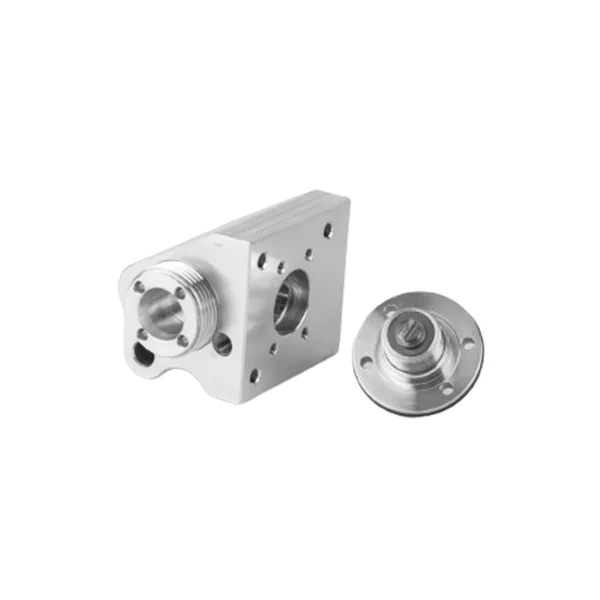- This topic is empty.
-
AuthorPosts
-
27/02/2025 at 18:41 #85712
The automotive air conditioning (AC) compressor is a vital component of a vehicle's cooling system, ensuring comfort by circulating refrigerant and regulating temperature. Behind its efficient operation lies a complex manufacturing process that involves precision engineering, high-quality materials, and advanced technologies. In this blog post, Okin will share the manufacturing process of automotive air conditioning compressor parts for sale, highlighting the key steps, materials, and quality control measures.
1. Key Components of Automotive Air Conditioning Compressor Parts
Before diving into the manufacturing process, it's important to understand the major components of AC compressor:
– Compressor Housing – The outer casing that protects internal parts and ensures structural integrity.
– Piston or Scroll Mechanism – Converts rotational motion into compression force.
– Clutch Assembly – Engages and disengages the compressor from the engine via a belt system.
– Bearings and Seals – Reduce friction and prevent refrigerant leakage.
– Valves and Gaskets – Regulate pressure and ensure proper sealing.
Each of these parts is manufactured with precision to withstand extreme pressures and temperatures.
2. Raw Material Selection of Automotive Air Conditioning Compressor Parts
The quality of the compressor starts with selecting the right materials. Manufacturers typically use:
– Aluminum Alloys – Lightweight yet durable materials for compressor housing and pistons.
– High-Grade Steel – Used in bearings, shafts, and clutch components for added strength.
– Rubber and Polymer Seals – Ensure airtight operations and prevent leaks.
These materials undergo strict quality inspections before being used in production.
3. Casting and Machining of the Compressor Housing
The compressor housing is typically made through die casting, a process where molten aluminum is injected into a mold under high pressure. This ensures a lightweight yet strong structure.
After casting, the housing undergoes CNC (Computer Numerical Control) machining, where excess material is removed to achieve precise tolerances. This step is critical for ensuring proper alignment of internal components.

4. Manufacturing the Internal Components of Automotive Air Conditioning Compressor Parts
Pistons and Scroll Mechanism
– For reciprocating compressors, pistons are manufactured through forging and precision machining.
– For scroll compressors, spiral-shaped scrolls are produced using advanced CNC milling.
Clutch and Pulley System
– The clutch is typically made from high-strength steel and undergoes heat treatment to enhance durability.
– The pulley is machined to exact specifications and coated with anti-corrosion materials.
Bearings and Seals
– Bearings are precision-ground to ensure smooth rotation.
– Rubber seals are molded and tested for flexibility and temperature resistance.
5. Assembly Process of Automotive Air Conditioning Compressor Parts
Once individual parts are manufactured, the assembly process begins:
– Housing Preparation – The compressor body is cleaned to remove debris and contaminants.
– Internal Component Installation – Pistons, bearings, and scroll mechanisms are installed with extreme precision.
– Clutch and Pulley Attachment – The clutch system is carefully mounted to ensure proper engagement with the engine belt.
– Lubrication and Sealing – The system is lubricated with special compressor oil to reduce wear and tear.
– Final Sealing – High-quality seals and gaskets are applied to prevent refrigerant leakage.
6. Quality Control and Testing of Automotive Air Conditioning Compressor Parts
To ensure reliability, each automotive air conditioning compressor undergoes rigorous testing:
– Leak Testing – Checks for any refrigerant leaks using pressurized air or gas.
– Performance Testing – Simulates real-world conditions to measure efficiency and cooling performance.
– Durability Testing – Compressors are subjected to extreme temperatures and pressures to assess longevity.
– Noise and Vibration Testing – Ensures smooth and quiet operation.
Only compressors that pass these stringent tests are approved for shipment.
7. Surface Treatment and Packaging of Automotive Air Conditioning Compressor Parts
To prevent corrosion, compressors often receive protective coatings such as:
– Anodizing (for aluminum parts)
– Powder Coating
– Zinc or Nickel Plating (for steel components)
Finally, compressors are carefully packaged with protective materials to prevent damage during transportation.
Conclusion
The manufacturing process of automotive air conditioning compressor parts is a meticulous and high-precision task involving multiple stages, from material selection to rigorous testing. As automotive technology evolves, manufacturers continue to refine their processes, making compressors more efficient, durable, and environmentally friendly.
By understanding the complexities behind these essential components, we can better appreciate the engineering expertise that goes into keeping vehicles cool and comfortable.
-
AuthorPosts
- You must be logged in to reply to this topic.